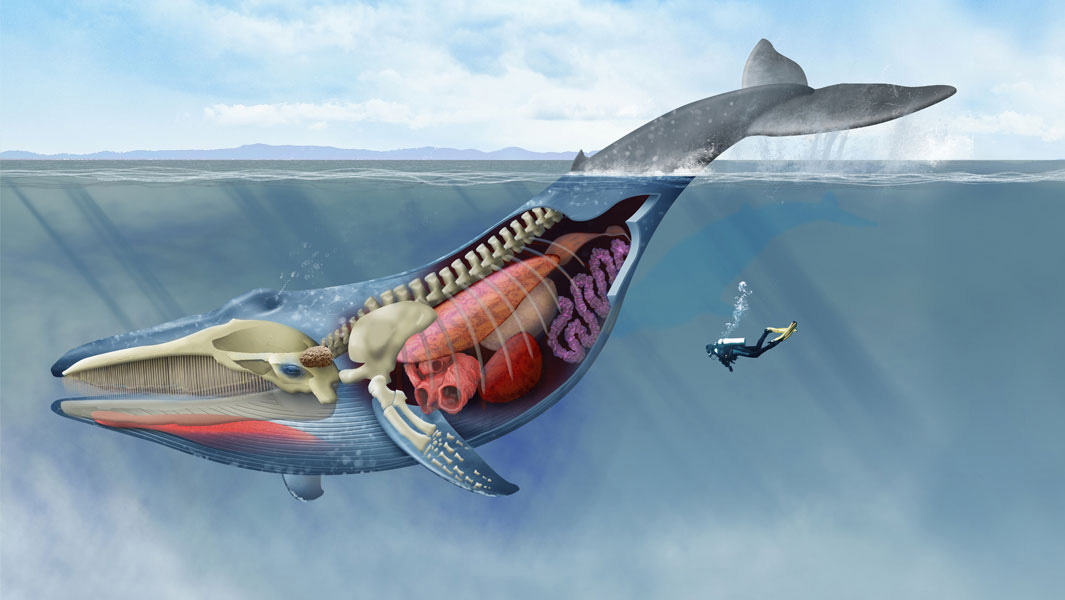Whale Day: All the records held by the majestic ocean giant + fun facts

18 February, or the 3rd Sunday of February every year, is World Whale Day! 🐳
How much do you know about the majestic giant of the ocean?
Humans have been fascinated and in awe of whales for centuries. They are gigantic but graceful in their movements, record breaking in so many ways but, at the same time, widely misunderstood creatures.
Keep reading to discover all you need to know about them…
Largest animal ever
The blue whale is the world’s largest animal ever, with some of them weighing in at a massive 200 tonnes (440,000 lb), although 100–150 tonnes (200,000–300,000 lb) is the average.
And when we say ever, we mean that literally…
Even dinosaurs didn’t reach that size – for example, it’s almost 20 times heavier than a T-rex! 🦖
The blue whale can grow up to 30 m (98 ft) long – around the same as the average commercial airplane. ✈️
See the picture below: the blue whale is as long as 1 Boeing 737, 3 double-decker buses, 5 African elephants or 11 Smart cars!

Largest migrant
You can find blue whales in all the world’s oceans, as they travel thousands of miles every year, making babies in the tropics during the winter and swimming to more extreme locations to feed in the summer.
This also makes them the largest migrant in the entire animal kingdom!
Would you like to travel around the world like blue whales? 🌎
Largest & heaviest
The blue whale also holds the records for:
- Largest heart – weighs in at around 199 kg (440 lb)
- Largest lungs – with a capacity of 5,000 litres (1,320 gal). That huge body demands a lot of oxygen!
- Largest offspring – even their babies are enormous! Newborn calves can be 8 metres (26 ft) long and weigh 2–3 tonnes (4,400–6,600 lb).
- Heaviest tongue – weighs about 4 tonnes (8,820 lb)

Fun facts
Here are some fun and interesting facts about whales, to help you get to know them better:
- Humpback whales don’t eat for most of the year. 😮 But don’t worry, they’re not starving – in fact, they live off their fat reserves for around 5 to 7 months per year, as they migrate from their tropical seas to the Antarctic, to feed on fish.
- Killer whales are actually… dolphins! Orcas, also known as "killer whales", are the largest members of the dolphin family.
- Blue whales can consume 14 tonnes (15.4 tons) of krill in a single day – that’s about the same as 4 hippos! 🦛 🦛 🦛 🦛
How much do you know about all of your favourite sea creatures? Take this quiz on Marine Animals to find out!
Protecting whales
Whales are beautiful, extraordinary creatures but, more than that, they are of critical importance to the health of the marine ecosystem.
Unfortunately, 7 out of the 13 great whale species are endangered or vulnerable…
One of the reasons for that is the intensive whaling in the early 20th century that devastated the world’s blue whale populations.
But thankfully, in 1966 they were labelled as a protected species, and its numbers have started to rise again!
With our continuing support, blue whales will be around for many years to come.
🔎 So what can we do to protect them?
Well, one thing we can all do is learn more about them and promote whale conservation!
So send this story to your friends or simply share all you’ve learned with anyone who’s interested, and let’s celebrate World Whale Day. 🐋